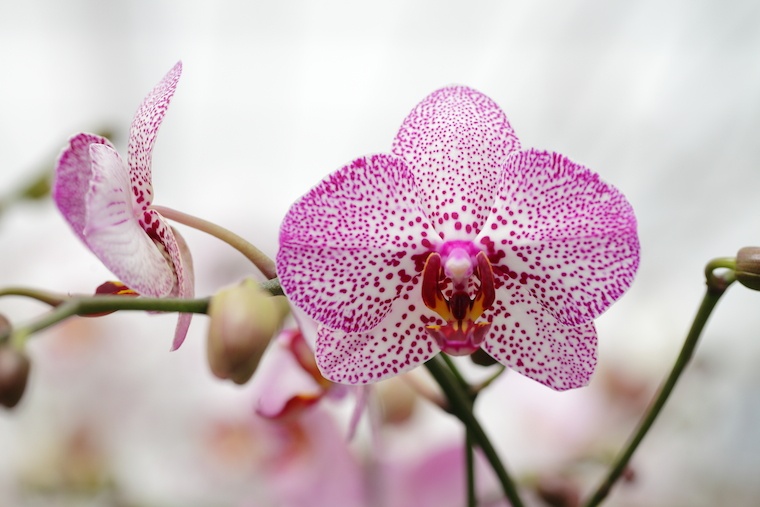
Some people may think that Phalaenopsis orchids are fussy plants that require constant attention, but avid fans of orchids tend to disagree. With a little love and attention, Phalaenopsis orchids will reward its owner with beautiful flowers and the knowledge of a special type of plant.
A question often arises as to when it is an appropriate time to repot an orchid. Different types of orchids have specific repotting requirements depending on the type of orchid they are.
Examine the size of the root mass and remember that orchids like to live in slightly tight quarters. If their root mass is in too large of a pot, the energy of the plant will be focused on root growth and not on flowering. Best practice is to choose a new container that is one inch larger in diameter if the orchid has outgrown its current pot.
Common materials that are used include sphagnum moss, fir bark, coconut husk and tree fern fibers. Repotting can include a mixture of two or three of these types of materials.
It is best to repot every 12 to 24 months.
No. Phalaenopsis orchids can easily exist in plastic or clay pots. Be mindful of the difference in watering that is required for your orchid if you change from a plastic pot to a clay pot. All pots must have drainage holes; roots that continuously touch water will rot and die which will eventually kill the plant as well.
Ready to repot your orchid? Our Orchid Repotting Kit makes it easy! The kit includes everything you need to repot, including a new pot, potting media and instructions.

Copyright Just Add Ice® Orchids 2023